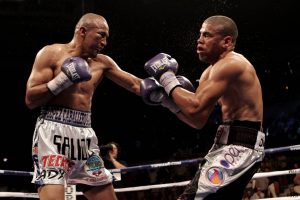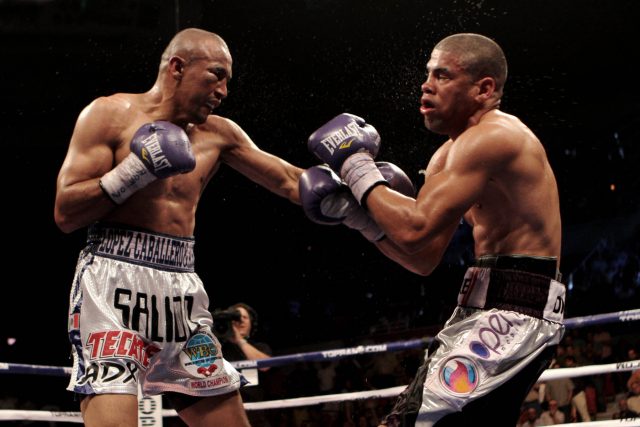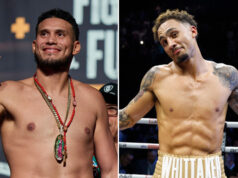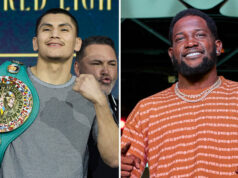Tips for Betting on Boxing: Boxing Betting Advice
Here are just a few things to keep in mind when betting on boxing. Boxing wagering, like the sport itself, has fallen into disfavor compared to its glory days. There was a time not so long ago when boxing betting was the favorite form of sports wagering. Crumbled levels of trust have relegated it to more of a niche following, but there is still money to be made. Here are some tips that could help you get better results.
Hype-Dominated Lines
We have to know what goes into making lines. Ideally, the bookie sets the odds that will yield an even amount of betting on both sides. But beyond that, the odds are set largely according to public opinion–how the general betting populace perceives reality. Keeping in mind that most boxing bettors are losers in the long-run, public perception is not always on-target.
This is where your boxing knowledge can come into play. Often times, you will see fighters getting too much or not enough credit. There have been many times during your years of watching the sport where you knew the public had it wrong and were proven to be correct. Overhyped fighters fall by the wayside, while diamond-in-the-rough fighters get to the top. Happens all the time.
If you are able to sense when the public perception is out of whack and pull the trigger, you are well on your way. That’s really what it’s all about–getting good value and avoiding poor value. The only way to do that is to swim against the public current. If you feel a fighter is getting too much or not enough credit by the public, you can capitalize on this in your wagers.
Line Movement
A key part of betting boxing is to have a good handle on the lines. A lot of casual bettors neglect this part of wagering. They pick a fighter to win a fight and more or less accept what the odds are without protest. First of all, take note of the different lines offered by different bookies. Keep several betting options to get the best available line. The variance can be quite great.
Whether or not you’re a shrewd betting man can be gauged by the odds you bet. The line will open and then close. In between, there can be massive line movement. If you consistently get a better price than the opening line, you are doing well. The line can move big-time from when the betting opens to when it closes. Getting the best of that price is key. If you bet Mayweather at -800 the night of the fight when you could have had him at -500 a week before, you’re leaving money on the table. Consistently getting the short end of the odds is a surefire recipe for disaster.
Knowing exactly when to bet can be tricky. But by in large, the betting public likes favorites. If a fighter opens as a -500 favorite, betting early might be a good idea, as betting support is more likely to make that number rise. Conversely, underdogs might offer a better price the closer you get to fight-night. This is especially true when a favorite is a robust fan favorite, with the underdog being a more unknown quantity.
Pick Fighters Even if You Think They’ll Lose
This sounds highly counter-productive. Pick fighters you think will lose? Yes, believe it or not, this can be a profitable move. Look for odds that don’t really reflect the true probability of an outcome. Sometimes, you might want to bet on a favorite, only to be stunned at how big of a favorite he actually is. There’s not much value in betting a -1200 favorite. If you thought the favorite should have been maybe -400 or -500, then a -1200 number might make you want to take the opponent.
When looking at fight odds, you will often be surprised at how heavily-favored a fighter is. Betting on his opponent in this case is a good value bet. If you’re consistently getting 10-1 odds for fighters you feel should only be 4-1 or 5-1 underdogs, that can be a successful betting move in the long-run. Plus, it gets you in the mindset of looking for good-value underdogs–the staple of any successful boxing bettor’s repertoire.
Ignoring Troubling Signs

Sometimes we assume a fighter is great and require too much evidence before changing our opinion. Look at Juan Manuel Lopez, for example. It was hard not to get excited as he crashed on the world title scene with three consecutive 1st-round knockouts. But as his career wore on, we saw troubling signs–a lack of defense, a near-disaster against a mediocre challenger in Rogers Mtagwa, and a general erosion of skills.
Still, those warning signs didn’t stop him from being a preposterous 15-1 favorite against Orlando Salido in their first fight, which Salido won by knockout. Obviously, we hadn’t learned the lesson. And even though Salido battered Lopez the first time around, Lopez was still a sizable favorite in their rematch. When Salido again won by knockout, it was clear it would be the last time Lopez would be a big favorite against a fighter like Salido.
When you see a fighter like Lopez–a huge favorite but a seemingly vulnerable one–exercise extreme caution. When you lay 10-1 in any sport, you should be backing a very solid proposition. A 10-1 favorite in a sport like boxing should be almost foolproof. You have to win over 90% of these bets just to break even, so never take the short price on vulnerable fighters like Lopez, no matter how offensively menacing they might appear to be.
Older Fighters Dropping in Weight
Sometimes, a fighter’s career hits a wall. Their viability is compromised and they need to make a change. So they drop down to a weight where they once had success in an effort to pump some wind into their sagging sails. It never seems to work out well.
Whether it’s Emile Griffith dropping down to 147 to fight Jose Napoles or Sugar Ray Leonard taking on Terry Norris at 154, older fighters dropping weight never seems to work out well. Those two examples aren’t the best, being that Napoles and Norris were great fighters at the time. But there are others.
Remember several years ago when former heavyweight titleholder Chris Byrd dropped down to light heavyweight after his mojo ran out at heavyweight? Byrd had beaten men who weighed in the 230-270 range. Against 175-pound Shaun George, he was shellacked. At 174 pounds, Byrd looked dried-out and brittle. And he fought like it.
The Byrd example is perhaps a drastic one, but it illustrates a good point. Older fighters have enough working against them without having to sweat off a bunch of weight. Younger fighters can bounce back from dropping weight, but the older we get, the less easy it becomes to drop a lot of weight while remaining in top form.
Be Wary of Hometown Favorites
This is one of the more infuriating parts of boxing wagering. You orchestrate a nifty piece of handicapping, only to see your bet go down the drain as the hometown fighter is awarded the unjust victory. Then again, it is as old as the sport itself. Don’t go to the beach and complain about the sand. You know the deal going in. If the home cooking works against you, rest assured that you’re not the first person to suffer that fate. Probably not even on that weekend.
An established fighter on his home-turf is hard to win a decision against in most cases if the fight is even remotely competitive. You might like the underdog challenger in these cases, but keep in mind that he might need to dominate the fight. It won’t be enough to edge the champion. He might be in the unenviable position of having to win 9 or 10 of 12 rounds just to get a draw.
A lot has been said about the geographical specifics to this dynamic. But when taking an even-handed approach, it seems to go on everywhere. You might see a handful of high-profile robberies in a certain area and think it’s an inherently corrupt location for boxing. For example, maybe you believe Germany has an over-abundant amount of hometown decisions. Not to say there haven’t been a lot of circumspect decisions in Germany, but they certainly don’t have the market on bad decisions cornered.











